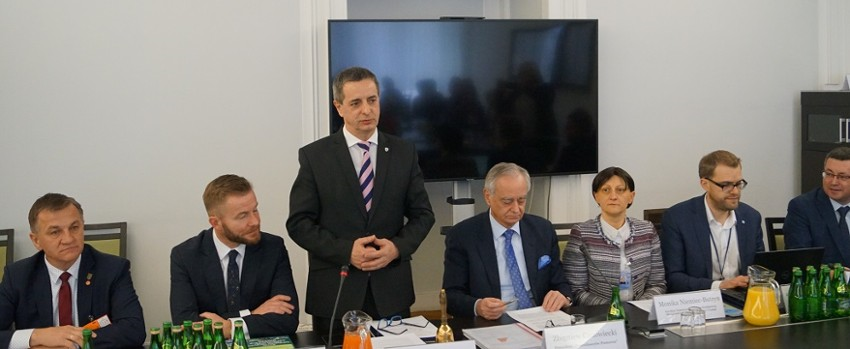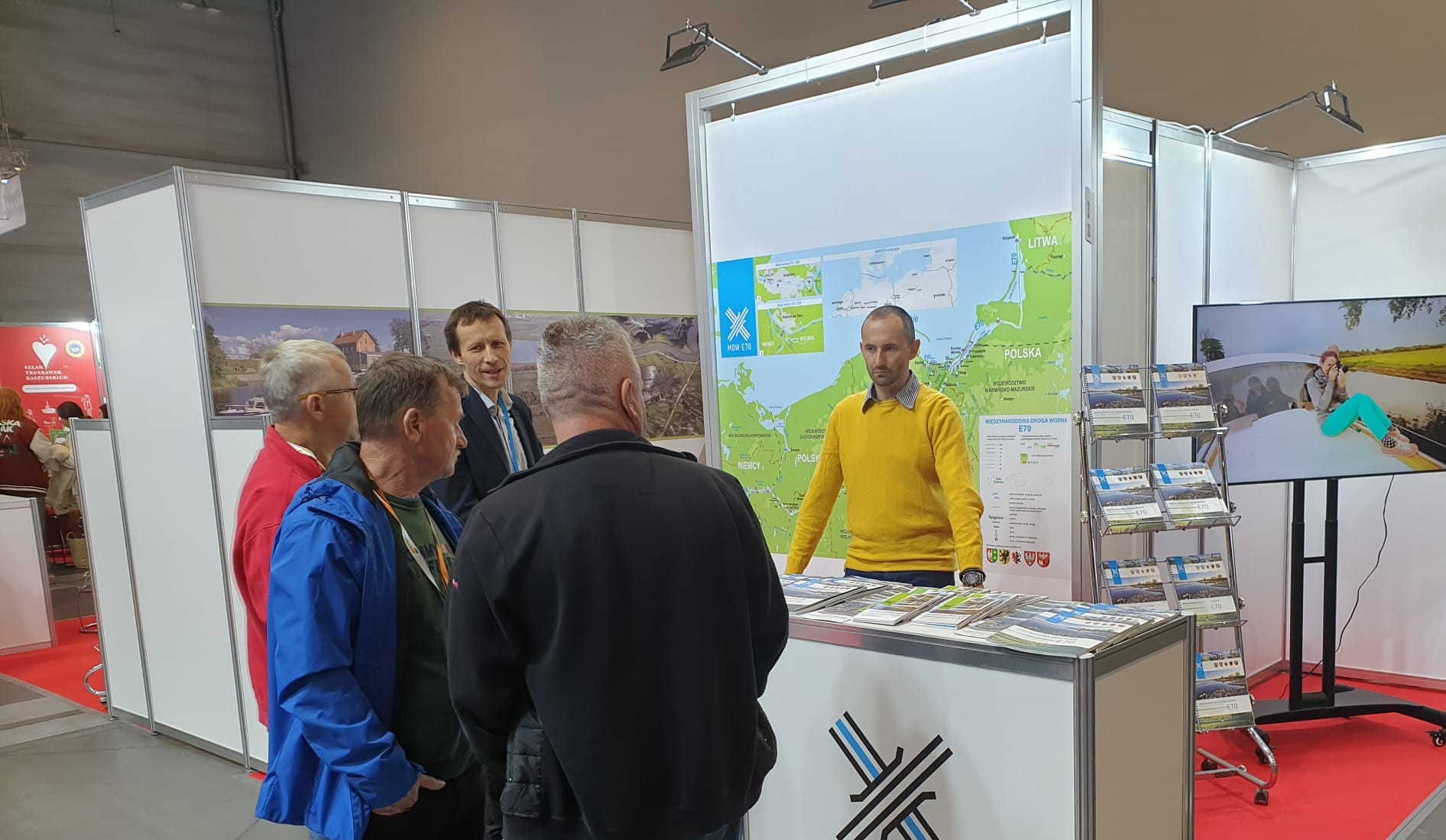On 11 April, 2019 in Warsaw, at August Chełkowski Senate Hall, a joint meeting was held of the Parliamentary Group for Development of Waterways and the Team for Revitalisation of the International Waterway E70. The main topic was discussion on the possibility of restoring tourist and cargo navigation on the Polish stretch of the International Waterway E70.
The meeting was hosted by Senator Jerzy Wcisła, the Chairman of the Parliamentary Group for Waterways Development. Mr Ryszard Świlski, Deputy Marshal of the Pomorskie Voivodeship, which coordinates the work of the IWW E70 Team, discussed results of the multi-year cooperation of parties to the IWW E70 agreements. The debate was chaired by Mr Zbigniew Canowiecki, the President of “Pomeranian Employers”. The following guests were invited to the discussion: Ms Monika Niemiec-Butryn, Director of the Inland Navigation Department of the Ministry of Maritime Economy and Inland Navigation, Mr Zbigniew Siemoniuk, a representative of the Polish Water Management Authority, Mr Sławomir Napierała, President of the Association of Towns and Municipalities located on the Noteć River, the Mayor of Nakło on the Noteć River, Mr Stanisław Wroński – representative of the Marshal of the Kujawsko-Pomorskie Voivodeship for Polish Waterways, Mr Andrzej Klimek – Vice President of OT LOGISTICS, Director of the Inland Navigation Division, and Mr Tomasz Milewski – the owner of tourist barges and the charter company Żegluga na Warcie. The speakers discussed various topics related to IWW E70, including the state of infrastructure of this waterway, the development of water tourism, and issues of navigation and safety.
Attention was also drawn to challenges faced by services responsible for development and maintenance of this waterway. Additionally, they shared their experiences related to inland navigation and its development in economic, strategic and planning aspects.
The conclusions stemming from the discussion are that every effort should be made to ensure navigability for tourist vessels on the Polish section of the IWW E70. To this end, dredging work needs to be carried out on an on-going basis in order to maintain a water level of 1.6 m. Furthermore, it is necessary to clear rivers of shrubs, reinforce banks and maintain navigation markings. An issue of paramount importance is the repair of locks, particularly on the Oder-Vistula section, so as to make navigation possible over the whole spring-summer-autumn season. Consistent activities in this area will enable development of tourist navigation, which in turn should influence the development of riverside infrastructure (ports, marinas, quays). The ultimate result should be increased ease of tourist navigation, incentives for investors to establish businesses (cruises, shipyards, restaurants, hotels), and an impulse for local governments to increase investments in the development of areas located directly on rivers (promenades and paths for sports, physical activities and recreation).
The Team for Revitalisation of the International Waterway E70 has initiated actions to develop, in cooperation with the Ministry of Maritime Economy and Inland Navigation, a Study for the course of the IWW E70 on the Oder-Vistula section. The concept is intended to indicate the new course of the E70 waterway. It assumes that a transport route of IV or even V navigability class will be constructed to enable navigation of commercial vessels with a capacity of at least 2,500 tonnes. At present, it is not possible to achieve such parameters (in particular, on the Oder-Vistula section running along the Warta, Noteć, Bydgoszcz Canal and Brda) due to environmental reasons and the preservation and maintenance of locks.
As it is not possible to adapt the Polish section of the International Waterway E70 to class IV standard in the short term, the opinion of the meeting participants is that it is reasonable to improve this waterway to class II standard in order to stimulate water tourism and enhance the navigation possibilities for barges. In particular, this concerns the existing Oder-Vistula Connection, where the Noteć, turned into a canal over a stretch of 136 km, has class Ib navigability at present. What is more, the navigation parameters of the further, northern section of IWW E70, covering the Vistula, Nogat and Szkarpawa, should be maintained on an on-going basis in line with the classification of waterways adopted in Poland. In the longer run, efforts should be made to adapt the lower Vistula and its estuarial sections to at least class IV navigability to ensure the international importance of this waterway, while a new course should be determined for the Oder-Vistula connection.




